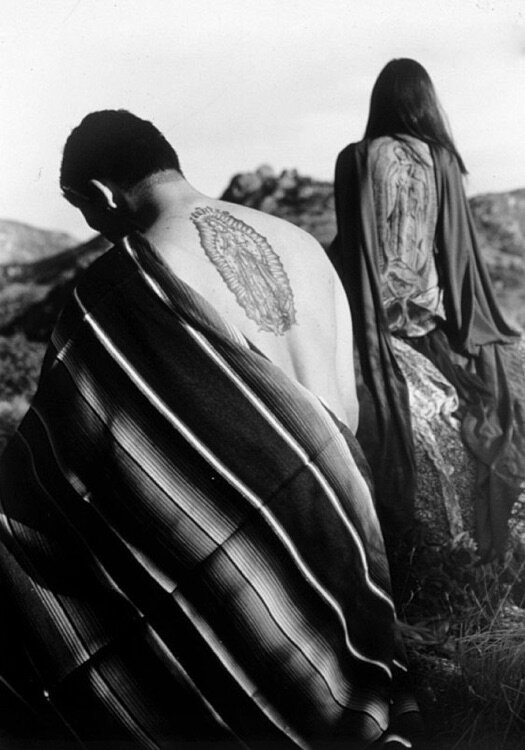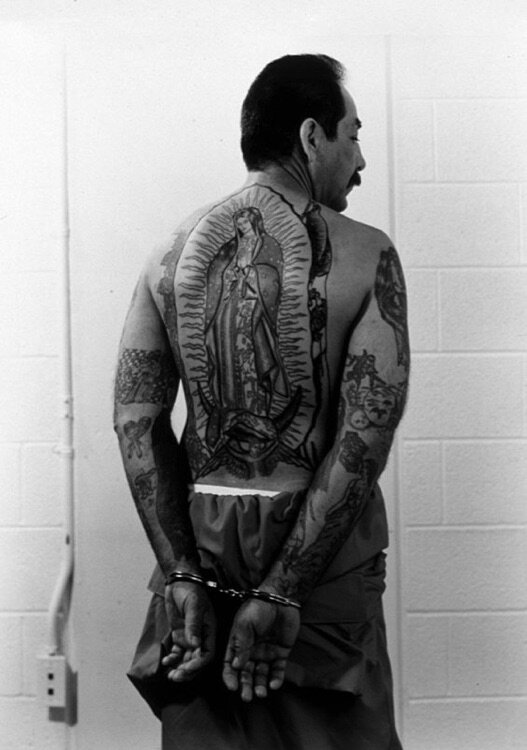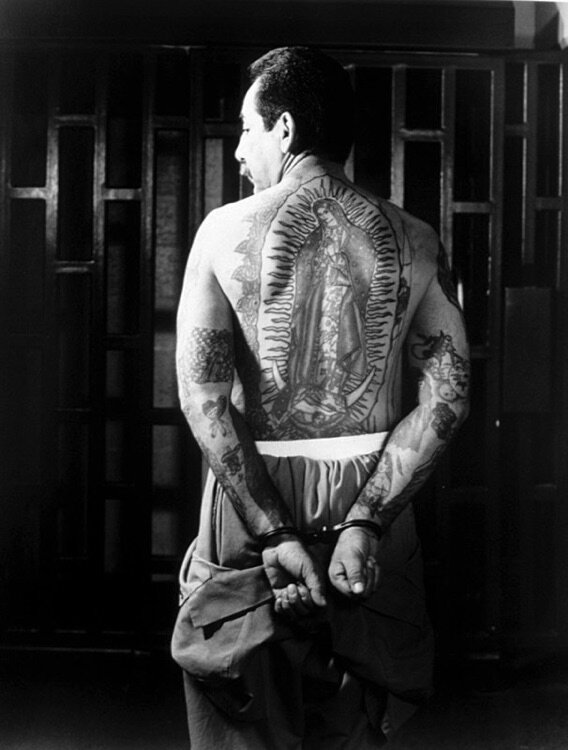DELILAH MONTOYA
GUADALUPE TATTOO
Click on the thumbnails to view larger images.
ABOUT THE SERIES:
This installation of the Virgin of Guadalupe was conceived for the invitational show “Ida y Vuelta: Twelve New Mexican Artists.” La Guadalupana has been exhibited extensively, as well as included in two national traveling exhibitions, “Only Skin Deep: Changing Visions of the American Self,” hosted by International Center of Photography, and “Imágenes e Historias: Chicana Altar-inspired Art,” hosted by Aidekman Arts Center at Tufts University. It has been published and reviewed in numerous publications such as "Secrets of Survival” by Sandra Matthews, “Behold Their Natural Affinities” by Victor Alejandro Sorrel, and "Looking Through the Eye of the Goddess: Delilah Montoya’s Photoinstallation La Guadalupana" by Asta Kuusinen in Chicana/o Art: A Critical Anthology, 2013. The Museum of Final Arts in Santa Fe, New Mexico purchased a smaller version, and Williams College in Williamstown, Massachusetts purchased the original installation thus placing both installations in permanent collections.
This work was originally produced for an installation at the Musée de Beaux-Arts Denys-Puech in Rodez, France, where the basilica in the central plaza hosted a 17th century Mexican easel painting of the Guadalupe. Since the community was familiar with the Guadalupe as a religious relic, Montoya aimed to reintroduce this image as a cultural icon that would demonstrate the Chicano vernacular. The intent was to bring back to Europe the Guadalupe as a container of the underpinnings of colonial dark side that foregrounds captivity, oppression, and servitude.
In the biography excerpt from Women Boxers: The New Warriors, Ondine Chavoya writes that, "This duality of saints and sinners--and the associated themes of life, death, and salvation--is also powerfully depicted in La Guadalupana (1998)… La Guadalupana is a 15 ½ -foot photomural. Shot with a large-format camera, the monumental image features a man faced away from the viewer, standing in front of metal bars, and posed with his hands behind his back in handcuffs. Emblazoned on his back is an elaborate and brilliant tattoo of La Virgen de Guadalupe. The image effectively channels the sacred and the profane and transforms the physical space of a prison cell into a sacred space and the body of the inmate into an ofrenda or altar. The memorializing function of the installation becomes all the more palpable when you learn that the person portrayed, Félix Martinez, was killed in his Albuquerque jail cell shortly after the photograph was taken. In this instance, the paired relationship of saint and sinner has the capacity to transform the viewer before the image into the penitent.”









